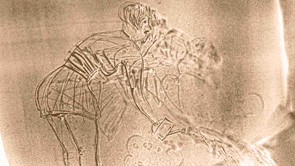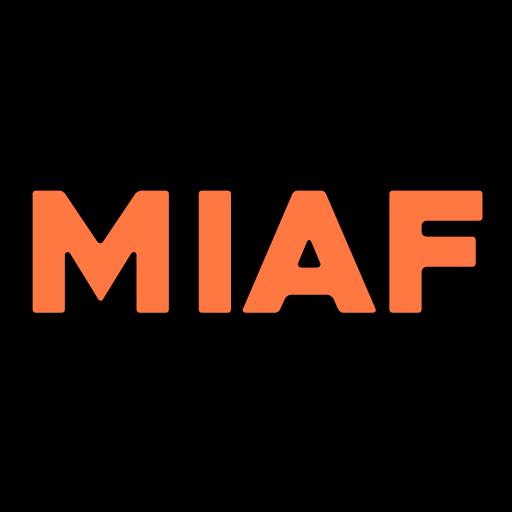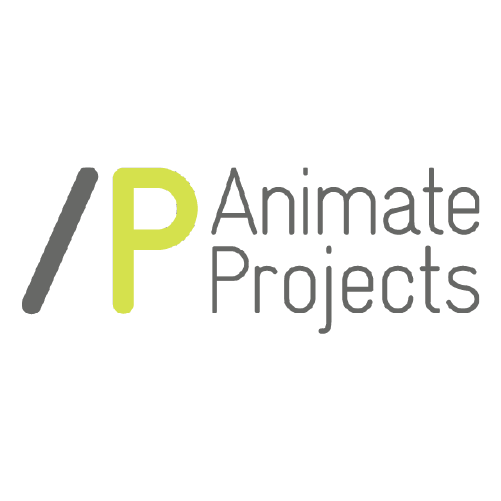Surrealism
A movement in art and literature seeking to express the subconscious mind by any of a number of different techniques, including the irrational juxtaposition of realistic images, the creation of mysterious symbols, and automatism; art or literature produced by or reminiscent of this movement.
(Oxford English Dictionary Online)
Arts and Literature Projects, trying to remember to sleep, one of the many ways, including, alongside the old material, the structure, the different signals and automation; Arts and Literature initiative memories..
(Same definition after being run through an on-line translator from English to Yiddish to Catalan to Maori to Icelandic to Estonian and back to English – note the extra full stop at the end!)
Hands up who prefers the second definition to the first?
Surrealism, as we mostly know it, began its journey in earnest in 1924 when Andre Breton, the spiritual path-lighter of a group of Parisian artists, launched his Manifeste du Surréalisme. Artistic and political manifestos around this time came thick and fast, many fading without trace, influence or noticeable followers. Surrealism, however, has stood the test of time, at least to the extent that its core values are something that need no introduction or further explanation when used as either a noun or an adjective. In so many ways, the budding artform of filmmaking was a sitting target for ambush by surrealists and almost immediately upon the release of the manifesto provocative, challenging films erupted from within the group. The most famous of these is undoubtedly Un Chien Andalou made by Luis Buñuel and Salvador Dalí in 1929, which shocked audiences (and continues to shock first-year film students the world over) with its sudden and graphic slicing open of what appears to be a human Eye.
Animation is an artform astonishingly well suited to shaping by surrealist tendencies. Indeed, to most of the ‘uninitiated’ many of the films that get shown in a festival such as LIAF would come across as being ‘surreal’ to some degree, especially in the context of the extraordinary amount of hyper-real animation that tends to fill the mainstream animation landscape. To the fully initiated however, almost the opposite might be the case with a film like Shrek, whose underlying mantra that bestiality is more acceptable than homosexuality, qualifying it as one of the more illuminating pieces of contemporary American surrealism… depending on how you look at it.
Perhaps America has less need of surrealism than many other places though. Among surrealisms’ many splendored wonders is its flexibility and willingness to adapt to varying times, changing cultures and even personal philosophies. Part political ferret, part artistic rainbow unicorn, surrealism has morphed and contorted itself to match the mood, the times and the imperatives of its situ, wherever that may be. Communist Eastern Europe is the wobbly, melting centre of the grand surrealist experiment, which, in time, spanned out to encompass a swathe of nations from the Balkans to the Baltic. In a cultural environment tightly managed by governments that were determined to control every message, frame every picture and enforce a singular, centrally authored version of reality, surrealist expression and the consumption of surrealist art was part political protest and part artistic camouflage. Ferret and unicorn.
Estonia stands as a towering example of just how surrealism can be pushed into service as a kinetic energy fuel supply for a unique body of animation. Long dominated by two major studios, Nukufilm and Eesti Joonisfilm, each with a history that reaches well back to the era in which the country was ruled by the Soviet Union, the vast majority of Estonia’s back-catalogue of animated films would stand as textbook examples in any ‘Surrealism 101’ presentation.
Ülo Pikkov is at the forefront of a new (or newish) generation of Estonian animators who, while understanding the Soviet history of the artform in their country, have never worked under those constraints or needed to make films that reacted to that reality. An accomplished animator, teacher, author and historian, Pikkov has written much on the history of surrealism in his homeland. In his article entitled Surrealist Sources of Eastern European Animated Film, he forensically examines the imperatives that drove Estonian animators into the willing and waiting arms of surrealist expression as well as the history of the movement within Estonia’s animation community. The article quotes Estonia’s most renowned animator Priit Parn. “In Soviet animation film, adopting a surrealist point of view was a form of protest, since the authorities preferred funny films with unambiguous messages”, Parn is quoted as saying Pikkov’s article goes on to explain the transition to a more open artistic environment.
“By the second half of the 1980s, the political pressures had started to ease considerably in Estonia and, liberated from the clutches of censorship, the artists were able to enjoy more creative freedom. In 1986, on Parn’s initiative, animation filmmakers Rao Heidmets, Miljard Kilk, Mati Kutt, Hillar Mets, Priit Parn, Tonu Talivee, Riho Unt and Hardi Volmer formed the Tallinnfilm Surrealists group with Kalju Kivi and Vahur Kersna joining them at a later date. As the group included the majority of Estonian animation filmmakers of the late 1980s, the Estonian animation film (scene) of the time was decisively surrealist in nature”.
Fish! Pikkov singles out a film about a fish as a grand example of the extent and complexity of Estonian surrealist animation. Smoked Spratt Baking In The Sun is a 23-minute epic by Mati Kutt that was released in 1992 as a follow-up to a piece of exhibition art titled Smoked Sprats, which appeared in a group show in Finland three years earlier, featuring a tin jar filled with female torsos.
Based (loosely) on the Alexander Pushkin fairy-tale Golden Fish, this film is riven through with a plethora of bizarre juxtapositions. Each and every element of this unfolding saga constantly incites the audience to consider and consider again (and again) the norms of their ‘real’ world experiences. Kutt supercharges every cinematic device in conjuring a kind of narrative Rubic’s cube that the audience must attempt to do in their head as the imagery plays before their eyes and the overwrought German opera soundtrack mugs their eardrums. While the experiences, motivations and histories of these filmmakers are undeniable, some element of surrealism remains the preserve of the eye-of-the-Beholder. As a border country, Estonia has had a front row seat at one of the great socio-political tragedies of the post World War II 20th century. For an audience that has never lived under these conditions or known of the risks and deprivations that go hand-in-hand with the Soviet method of doing business, many of these films can be read as explorations of Estonia’s complex geo-political reality during the time of Soviet occupation.

So many of the Estonian films from this era seem to utilise the confounding language and the tangled signposts that are part of the surrealists toolkit to depict distant and often unobtainable horizons, confused explorations of the terra-firma that characters find themselves inhabiting and depictions of a different reality that careens wildly between the naive and the weary/wary wise. Such are the interpretive joys of surrealism! Ülo Pikkov will be joined in LIAF’s exploration of The Roots Of Surrealism In Estonian Animation by maestro of surrealist animation, Priit Tender. He is supremely qualified to do so. Gravitation, his 1996 breakthrough film is an outstanding example of what we are here to explore. It depicts a square world with edges from which it is easy to plunge, characters desperately trying to leave on wisps of smoke, hitchhikers on a perilously narrow road, and a series of Icarus-like characters, who come to grief in the skies above. The only ones making any apparent progress seem to be a series of people in flying cars including a family who wind up sacrificing their eyes as they fly ever higher and an elderly military officer, with a hook for a hand, piloting his flying car through the clouds as he is buzzed by WWII German fighter planes. Through the smoke, the clouds and the scenery, a constant parade of what appear to be map co-ordinates or radio call signals infuse the artwork that appears on screen whilst the soundtrack carries the phrase “To Fly, To Fly” over and over. His most recent film, The Maggot Feeder (2012) is one of the strangest, most thought-provoking films on the international festival circuit at the moment.
“I got a job at Eesti Joonisfilm, making backgrounds and designing some side characters for Priit Parn and Janno Poldma’s film 1895,” he says, thinking back to the gestation of Gravitation. I had no idea about scriptwriting or anything. I wrote a road movie about one guy travelling with two smoking angels. Priit Parn took one look at the script and thought it was bullshit. But I started to draw and made a storyboard, which was good enough to get a greenlight from the gurus and it took off”.
He looks back at an Estonian animation culture that for a long time has been sustained primarily by the two main studios. Now, it is being influenced to a degree by the emergence of a handful of smaller companies that, in turn, may fragment the funding and resource base. He is not entirely sure what the future holds.
“The big question remains the same and becomes even bigger in the future as capitalism advances…”, he suggests. “That question is for whom are we making these films?. Our international reputation and festival successes have managed to paralyse this question for a while but it pops up again and again. But I tend to see the future in bright colours. Perhaps we will make more features that will carry the spirit of art and madness. Perhaps we will become more international, making more co-productions and finding insane people from all over the world to collaborate with us”.
He credits the financial independence of animation funding and the geographic isolation of Estonia as being two of the key reasons that Estonian animation is recognisable and unique.
“The soup has been boiling in one kettle for decades and it’s created its own unique taste”, is his colourful way of putting it. There are two main sources of finance – the Estonian Film Institute and the Estonian Cultural Endowment. Usually a film receives money from both of them. Animation is part of our national identity, so it’s considered worth preserving. Much like a white rhino or an orangutan. Life for an Estonian animator is pretty much the same as for the white rhino – you just walk around the savannah and try not to be hit by illegal hunters such as lack of money, depression, unemployment, to name but a few”. Pressed on what he would be if he were not an animator, he seems to have trouble giving the question any respect. “The best would be to earn a lot of money with little work so I could be an animator in my free time”, is as close as he gets to an answer.
If there is a variable thread of surrealism that flows through most independent and auteur animation, Estonia has somehow harnessed the hot, molten core of that power source. To an extent, irony and surrealism have been creative defensive systems for people working in all streams of the arts sector in Estonia for a very long time and animation is a form that welcomes that with open arms.

The ‘future’ of Estonian animation has been a topic for discussion since the country achieved independence. But the hits just keep on coming. Priit Parn, the undisputed master of Estonian animation, has, along with wife Olga Parn, just released a new film Pilots On The Way Home. It is a work by a filmmaker who shows no sign of letting up. It is densely packed with so many of the questions, observations and obsessions that have driven all of his earlier films, including a sense of a restless searching for place and a struggle towards an uncertain horizon. Made as a co-production with the National Film Board of Canada it is a masterpiece that we are thrilled to be screening in this program. Has Priit Tender seen it yet?
“Haven’t seen it yet”, is the slightly surprising reply. “I am going to a screening in three days. I’ve heard it’s porn, so it must be good”.
Yes it is and yes it is and that’s only one tiny part of a big and strange story. Eye. Fish. Beholder. Indeed!
Malcolm Turner, LIAF Co-Director
Priit Tender and Ülo Pikkov are two of the most talented and respected names in the animation world. Individually and collectively they have been making films for twenty years in their homeland Estonia. Their films are driven by surreal imagery, black humour and dark existential journeys, and along the way they have won prizes at most of the world’s most prestigious animation festivals.
Ülo Pikkov and Priit Tender will take part in a Q & A with LIAF Director Nag Vladermersky after a screening of New Estonian Animation on 29 October.
Ülo and Priit will also be presenting The Surrealist Roots of Estonian Animation on 1 November.
Thanks to the Estonian Embassy for making possible the visit of Ülo Pikkov and Priit Tender to LIAF.
















